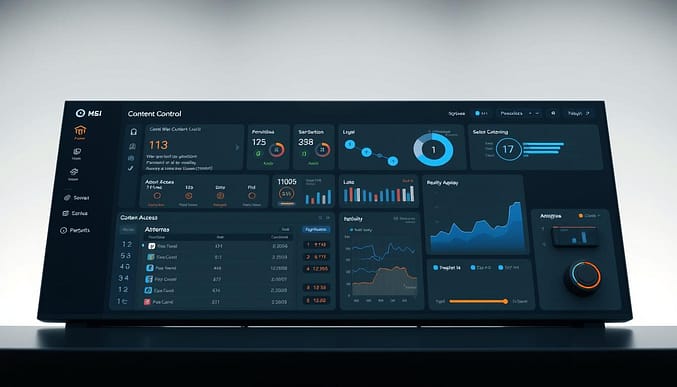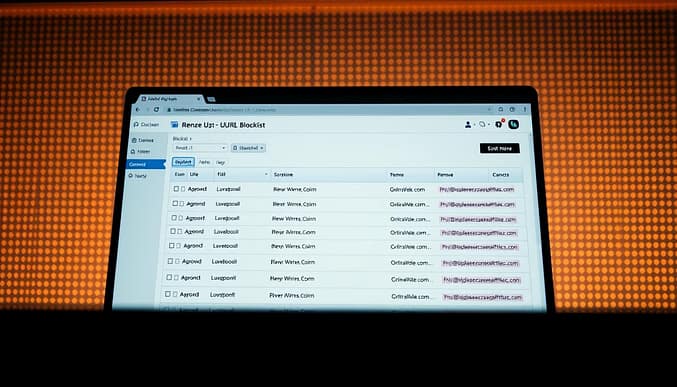How to Block Pages from Google: A Step-by-Step Guide
Managing online content visibility is critical for organizations prioritizing security and compliance. Whether restricting sensitive data or aligning with corporate guidelines, controlling what appears in search results requires strategic tools and policies.
Enterprise administrators often rely on URL blocklists and allowlists to filter web access across devices. These systems prevent users from visiting unauthorized sites while permitting approved resources. Chrome Enterprise and Google Search Central provide industry-standard frameworks for configuring these rules at scale.
Technical approaches vary, from adjusting browser settings to modifying server headers. For instance, Google’s official documentation outlines methods like noindex meta tags or HTTP headers to exclude pages from search engines. However, these solutions must align with existing infrastructure and compliance standards.
This guide explores practical configurations, real-world examples, and common troubleshooting scenarios. You’ll learn to implement policies effectively while avoiding pitfalls like accidental crawler restrictions or delayed indexing updates.
Key Takeaways
- Content control protects sensitive data and ensures compliance with organizational standards
- Blocklists and allowlists define which URLs users or search engines can access
- Enterprise tools like Chrome Admin Console simplify policy enforcement across devices
- Technical implementation requires coordination between SEO practices and IT security protocols
- Regular audits prevent conflicts between indexing rules and website accessibility
Overview: The Importance of Blocking Unwanted Pages
Organizations face growing challenges in balancing digital accessibility with operational safety. Structured content control systems act as gatekeepers, ensuring employees interact only with approved resources while minimizing exposure to risks.

Security and Productivity Through Managed Access
Managed browsers with URL filtering reduce accidental data leaks by 43% according to enterprise IT reports. Administrators use blocklists to restrict access to phishing sites or outdated internal pages. Simultaneously, allowlists ensure teams can reach verified tools without distractions.
Educational institutions often block gaming portals during exams. Healthcare providers limit access to patient portals from shared devices. These scenarios highlight how tailored policies maintain workflow integrity.
Strategic Implementation Scenarios
Three common situations demand content restrictions:
| Scenario | Risk | Solution |
|---|---|---|
| Internal documentation leaks | Unauthorized external access | Blocklist sensitive URLs |
| Malware-infected sites | Device compromise | Automated threat blocking |
| Time-wasting platforms | Productivity loss | Schedule-based restrictions |
Best practices include quarterly audits of blocked pages and testing exceptions through the Admin console. For example, a financial firm might temporarily allow tax filing extensions during peak seasons while maintaining general restrictions.
Effective policies require balancing strict rules with flexibility. Tools like Chrome Enterprise provide granular controls over search results and site permissions, adapting to evolving organizational needs.
How to block pages from google Using URL Blocklist and Allowlist
Controlling digital resource access requires precise tools that adapt to organizational needs. Chrome Enterprise’s Admin Console offers centralized management for defining restricted and permitted web destinations across devices.

Accessing Chrome Enterprise Controls
Navigate to Admin Console > Device Management > Chrome Settings. Select URL Blocking under User Settings. Enter domains using wildcard syntax like *example.com/* to block subpages. For allowlist exceptions, prefix URLs with @@ in the same field.
OS-Specific Policy Implementation
Windows administrators use Group Policy Editor to push registry-based rules. Mac systems require editing com.google.Chrome.plist files with Xcode or terminal commands. Linux configurations involve JSON files placed in /etc/opt/chrome/policies/ directories.
Restart Chrome after updates using chrome://restart or system reboots. Verify applied policies through chrome://policy – green status indicators confirm successful deployment.
Validation and Troubleshooting
Test blocked URLs in incognito mode to bypass cached data. Use Chrome’s Developer Tools > Network tab to check if policies trigger 403 Forbidden errors. For persistent issues:
- Confirm correct syntax in allowlist/blocklist entries
- Check device enrollment status in Admin Console
- Review system logs for policy application errors
Regular audits ensure content restrictions align with current security protocols. Update lists quarterly or after major infrastructure changes to maintain optimal protection.
Integrating Noindex and Advanced Settings for Enhanced Control
Combining technical methods strengthens content management strategies. The noindex rule works alongside URL restrictions to remove pages from search results while keeping them accessible internally. This dual approach prevents accidental exposure of sensitive data.
Implementing Noindex with Meta Tags and HTTP Headers
Two primary methods enforce noindex rules:
- Meta tags: Add
<meta name="robots" content="noindex">to page headers - HTTP headers: Configure servers to send
X-Robots-Tag: noindex
Ensure pages remain crawlable through robots.txt allowances. Blocked pages prevent Googlebot from reading noindex directives. Test accessibility using the URL Inspection Tool.
| Method | Best For | Update Speed |
|---|---|---|
| Meta Tags | Individual pages | Next crawl |
| HTTP Headers | Entire directories | Immediate |
Troubleshooting Common Noindex and Policy Issues
Delays in search results updates often occur. Google recrawls sites weekly on average. Accelerate the process through Search Console’s URL Removals tool.
Common configuration errors include:
- Conflicting robots.txt disallow rules
- Cache retention of old page versions
- Missing verification in Search Console
Regular audits help maintain alignment between indexing rules and security policies. Combine noindex with enterprise blocklists for multi-layered protection across devices and search platforms.
Conclusion
Precision in digital strategy requires combining technical controls with consistent oversight. This guide outlined methods like URL blocklists, noindex tags, and enterprise admin tools to manage content visibility. These approaches help organizations secure sensitive data while maintaining workflow efficiency.
Regular audits using Chrome’s policy console and Google’s inspection tools ensure rules remain effective. For instance, tools like BlockSite simplify browser-level restrictions across devices. Test configurations quarterly to address indexing delays or access conflicts.
Key benefits include reduced exposure to malicious sites and improved team focus. Apply these techniques to both office networks and home devices for comprehensive protection. Stay informed about updates to Chrome Enterprise features and search engine guidelines.
Balancing accessibility with security demands ongoing effort. Prioritize clear documentation and cross-team training to sustain long-term success in content management strategies.